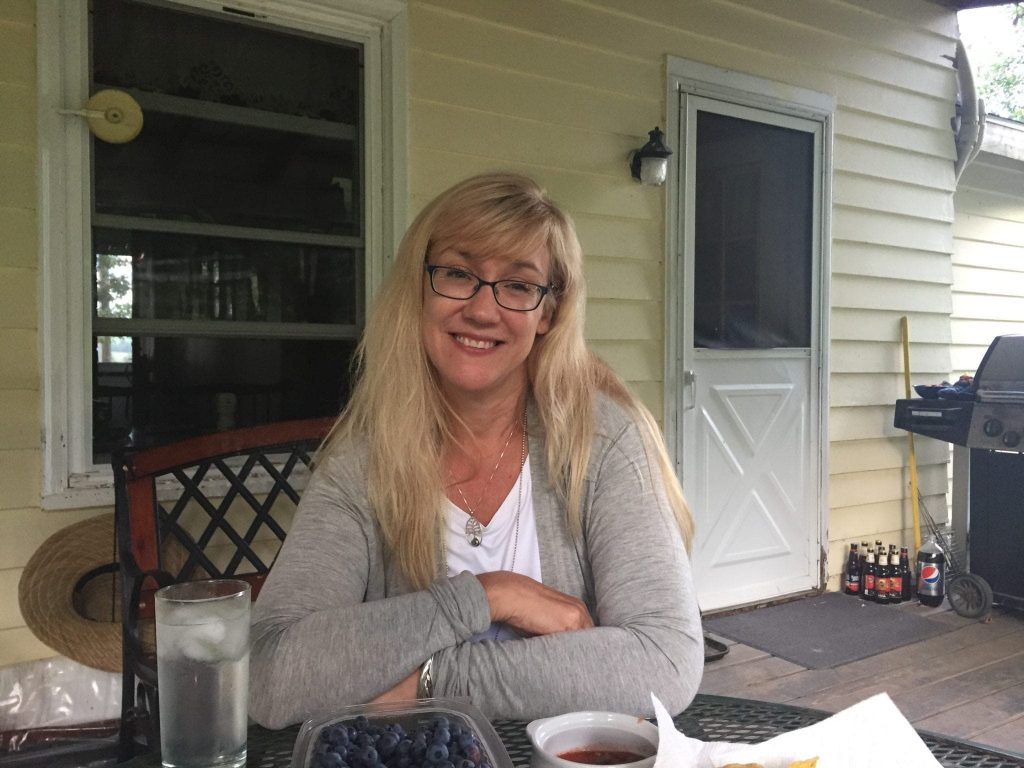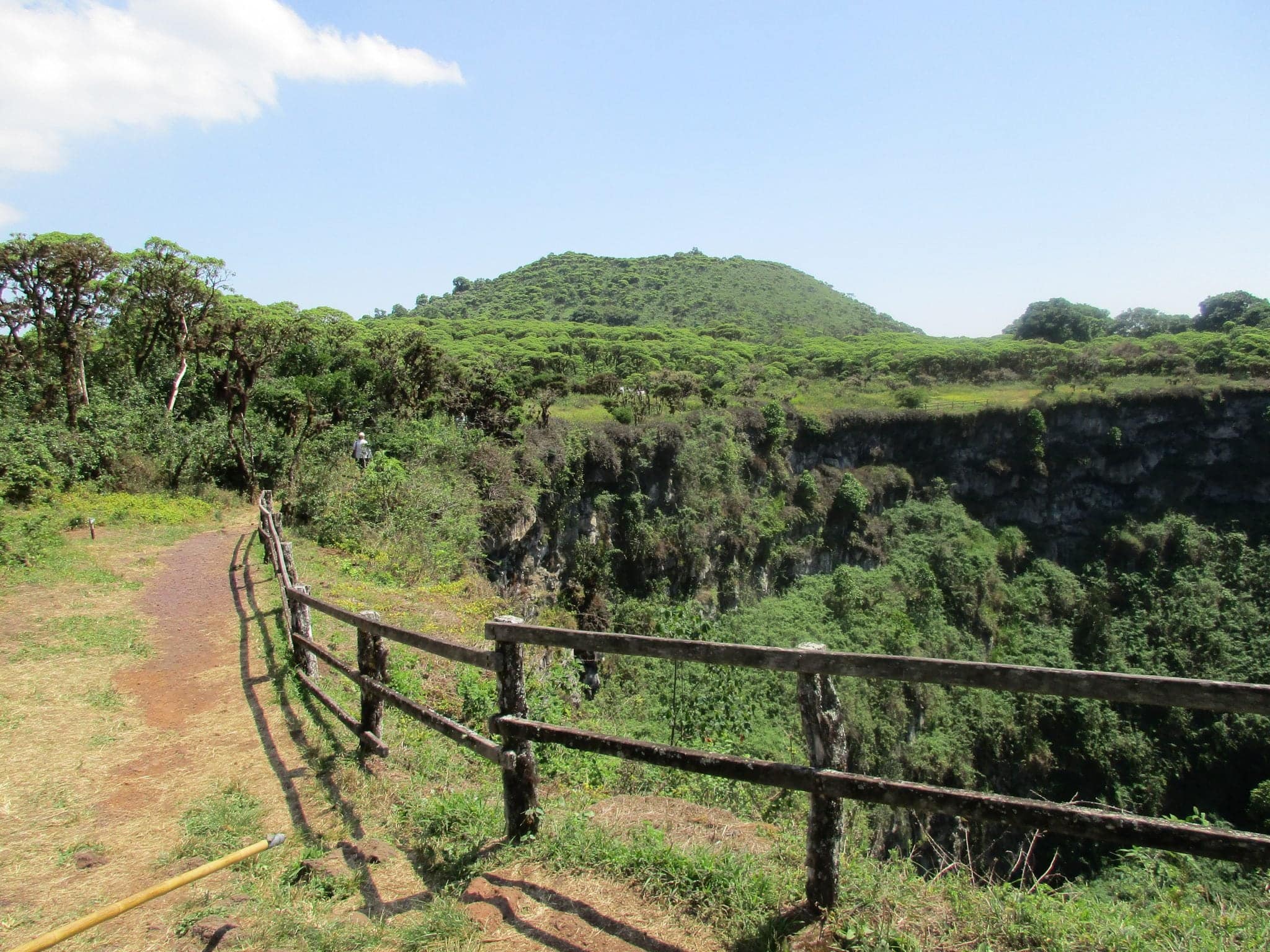SUNY-ESF professor conducts conservation research in the Galapagos Islands
Professor conducts conservation research in the Galapagos Islands

One sunny afternoon, Margaret Voss examined several bird nest boxes with her colleague in the backyard of his home in Fabius, New York.
“They’re home to any species that wants to move in,” Voss said as she unscrewed the small wooden door to a box. As they peered inside, they commented on the appearance of the nests briefly before moving onto the next one. The scene unfolded like any two bird enthusiasts enjoying a day outdoors.
But what seemed to be a casual get-together was actually science in progress. Voss, a professor in the Department of Public Health, Food Studies, and Nutrition at Syracuse University, is working on conserving the endangered Darwin’s finch. She and her colleague, Stephen Teale of SUNY-ESF, are studying these nest boxes as a localized research method to contribute to an ongoing project in the Galapagos Islands.
Voss said that as a bird lover, going into the field on a Friday afternoon to check nest boxes hardly seems like work. But birds were not always Voss’s focus. In 1997, she was on an entirely different trajectory.
Voss said a love of wildlife and animal welfare first led her to believe that veterinary medicine was her calling. After her undergraduate education, she spent time researching the diets of cormorants on Lake Ontario to analyze what was causing a shortage of stocked fish in the lake. The fishermen who depended on the presence of these fish for their livelihood saw the cormorants as pests, but Voss’s research revealed that the cormorants were not the ones to blame for the shortage. Bigger fish in the lake were eating the stocked fish because their natural food sources had been depleted.
“That was the point when I realized that this is what I want to do,” she said. “I was getting to use forensic anatomy and physiology to solve ecological problems, and I didn’t know the name for it at the time, but it was called being a physiological ecologist.”
These days, Voss splits her time between teaching and traveling to the Charles Darwin Research Station in Puerto Ayora, Ecuador to study the endangered finches. Her first portion of the research was done in spring 2016.
She said that her basic Spanish helped her adapt to the different culture and that she enjoys living like a local when she is there. She said one of her favorite things to do after a long day of research is walking to a local bakeshop for freshly baked bread and eating it while taking in the serene views at the top of a mountain.
“There’s just an authenticity of the experience that’s quite wonderful,” she said. “The lifestyle fits really well with who I am.”
Back in Central New York, Voss said she wastes no time on discovering potential breakthroughs while away from the field site. She and Teale were checking the nest boxes for parasites. If they find any, they collect material from that nest and run tests to determine what type of molecule the parasites are attracted to in bird nests, she said.
She said that the parasitic insect plaguing the Darwin’s finches will prey on any species and that birds found in central New York are genetically similar to Darwin’s finches. This means that examining parasitic interactions in these local nests will provide a valuable window into work that can be done in the Galapagos, she said.
According to an article published by Sonia Kleindorfer and Rachael Dudaniec in BMC Zoology last year, the parasitic insect Philornis downsi has been invading Darwin’s finch nests since 1997.
While the exact method of their introduction is not yet known, scientists speculate that the flies hitchhiked to the Galapagos Islands on the back of a bird species that was introduced there by humans.

Stephen Teale, who studies insects at SUNY-ESF, has worked closely with Voss on this conservation research for three years. He said that their combined experience in bird physiology and parasitic insect behavior has helped to move the project forward.
Alejandro Mieles, a PhD candidate in chemical ecology at SUNY-ESF, has worked closely with the chemical aspect of the project. Although he has not worked directly with Voss on the project, he said that he has always been able to tell how passionate she is and that her infectious enthusiasm for her work has always inspired those around her.
“She is an excellent professional and very skilled in her work,” he said. “The best part about working relatively close to her was getting to know an area of her specialization that I was fascinated by.”
Although Voss is concerned with conservation of endangered birds, she said that she recognizes that it is important to consider human perspectives as well. She said she believes the project would not have as much significance without including this dimension.
Adrianne Traub, a graduate student in the nutrition department at Syracuse University examines food security in relation to the conservation efforts. She said these efforts face backlash from Ecuadorians who farm on the land that is being targeted for conservation use.
“Conservation is expanding and squeezing farmers into areas that are less desirable for agriculture and there is some tension because of that. We are trying to find a balance where farming and conservation efforts meet together,” she said.
Though finding the balance between teaching, advising college students and doing research abroad may seem like a herculean feat, Voss said she finds time to devote to each subject area. Her husband, Scott Samson, an earth science professor at Syracuse University, has always admired her ability to do so.
“She inspires me because she can teach an inordinate number of courses and still do a lot more than most professors do,” he said. “Several of her students still keep in touch with her, and she genuinely cares so much about all of them.”
Voss said that one thought has helped her keep steadfast determination when faced with such challenges, and it is something she urges her students to keep in mind as well.
“It’s all about being open to letting the loose ends of your life weave themselves together without trying to direct the tapestry too much,” she said. “Find a skill that’s incredibly valuable and rare, develop that skill, and you will be successful.”





